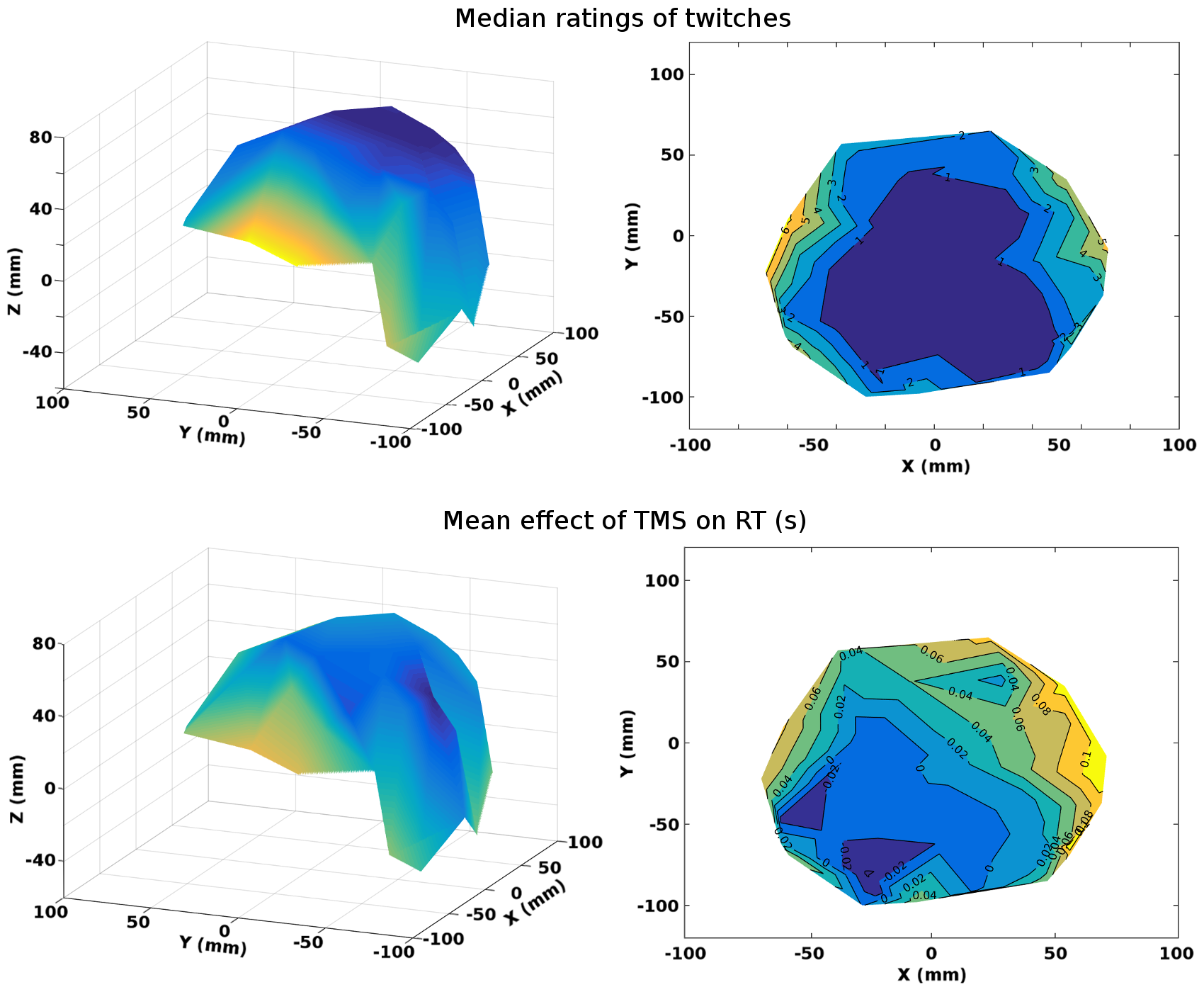Neurostimulation Laboratory
Transcranial magnetic stimulation (TMS) is a method used to stimulate small regions of the brain using brief magnetic pulses. During TMS, a magnetic field generator – the TMS coil – is placed on the scalp. The coil creates a strong magnetic pulse that is very focused, which induces local electric currents in the area of the brain immediately underneath the coil. We can therefore either induce or negate the activity of a particular brain region using TMS. Subsequently, this can change behaviour (e.g. how quickly or how accurately someone is able to complete a task), and by studying how a person’s behaviour changes when the brain’s activity is influenced by these magnetic pulses, we gain valuable insights as to which regions of the brain are involved in a particular task or set of skills. On-the-other-hand, we can also use TMS to stimulate regions of the brain that are underactive such as the reward system and prefrontal cortex in depression.
For example, we know that the regions of the brain on the left and near the front (i.e. the areas that sit underneath the left temple) are involved in producing speech. By applying TMS pulses over this area, it is possible to slow down people’s speech and make it slurred, or to make them produce speech errors. This shows how critical this brain region is for speech.
CINN uses a Mag&More TMS Machine which can be fitted with a range of coils. We utilise neuro-navigation and eye-tracking systems to accurately measure neural and behavioural features. CINN is one of only several centres in the UK with the ability to apply TMS in the fMRI scanner. Please see the multimodal imaging tab for more information.


